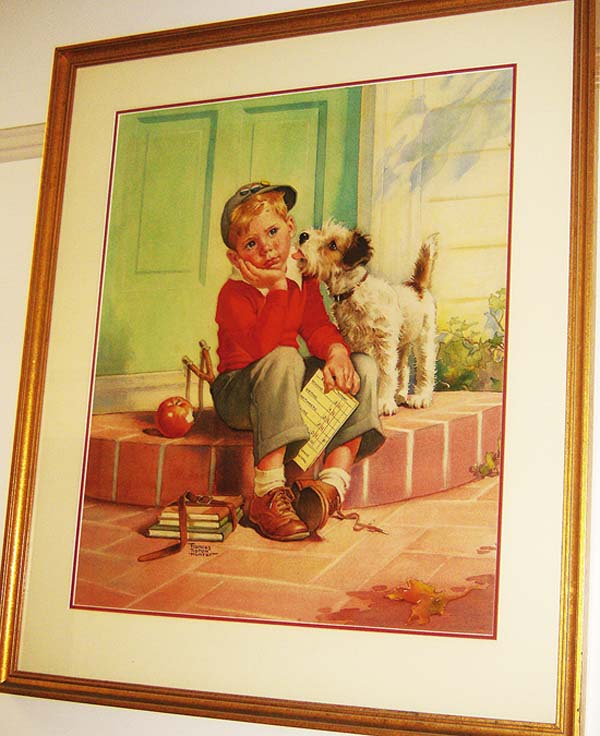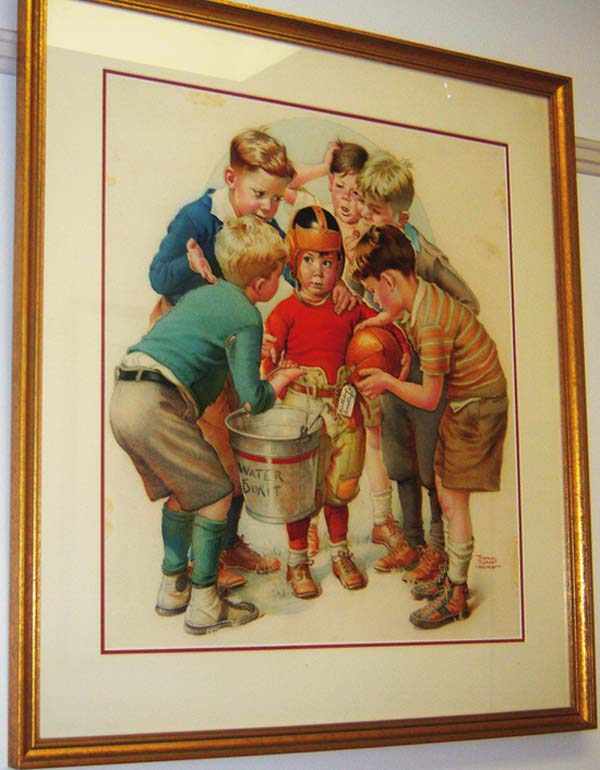Frances Tipton Hunter: A Brief History Of An Illustration Artist
By Michael Remas - November 01, 2024
Frances Tipton Hunter, the famed artist who designed illustrations for numerous publications while publishing two books for children, has been remembered with the erection of a Pennsylvania State Historical Marker. The event took place on June 9 during the annual Ways Garden Art Show in Williamsport, Pa. The Bald Eagle Art League, which sponsors the show, joined personnel from the Pennsylvania Historical Museum Commission (PHMC), the Lycoming County Historical Society, the citys Thomas T. Taber Museum and the James V. Brown Library (JVBL) of Williamsport in the installation. The PHMC has installed numerous markers at various communities in the states 67 counties over the years to call attentionand remembrances offamed persons and events. Hunter (1896-1957) designed covers for magazines such as Good Housekeeping, The Saturday Evening Post, and Ladies Home Journal. Much of her artwork included children and pets. Born in Howard, Pa., she moved at age 5 or 6 with her brother after her mother died and her father sent them to livewith an uncleand aunt, Mr. and Mrs. Edward McEntire in Williamsport.It was said that when she was 3 or4 and visited her grandmother, she would draw on stairway wallpaper. Her childhood interest in art was evident in early letters she wrote, often adding drawings This is a perfectly natural thing, she said later, for the first impulse is to express oneself, and the easiest way for a child to do this is by pictures. Her first watercolor art was done in the sixth grade at Transeau Elementary School and showed two pups, which she titled We Bark for Transeau. At Williamsport High School (WHS) she drew for its Cherry and White magazine (the school colors) and as a senior in 1914 won first place in a Williamsport Civic Club essay competition on her three most-admired works at a JVBL art exhibit, with judges saying she wastops explaining the artists meanings of their works. The last 1914 issue of Cherry and White was designed by her prior to graduation. She relocated to Philadelphia, where she was a student at the Pennsylvania Academy of Fine Arts. While there, her early work was to draw fashions for childrens clothes sold by department stores, during which in 1918 she won a $500 Wanamaker Department Store prize, roughly the equivalent to $10,000 today. She continued her study at the academy, later stating that her instructor would say the difference between other artists and illustrators is that the artist paints what the eye sees as the illustrator paints an image formed in the mind. Hunters next move was to New York City, where she sought to enter the magazine trade. Among her accomplishments were having her artwork published in A Saturday Evening Redbook, Womens Home Companion, Cosmopolitan, Good Housekeeping and others. This was the golden age of both the magazine trade and illustration art. Beside the big weeklies, she did advertising illustrations for large firms such as The Firestone Tire Company. Hunter was asked in 1946 to illustrate the Sandy in Trouble series of books that continued for 11 years, showing the daily woes of a boy and his pet dog. A Saturday Evening Post (SEP) article of the time stated, Hunter longed to remember the happiness of her youth and earliest childhood memories and this remained a constant theme throughout her lifes work.During the mid-1930s and into the 40s, she designed 18 covers for The Saturday Evening Post. In 1920, she told a Williamsport Sun Newsman, I have always had the idea of a child I want to put on paper in my mind and Im never satisfied until I get that child on paper.Sometimes I destroy half a dozen then because they are not in my mind for I know that I cannot rest until I have accomplished whatI started out to do.One of her jobs was painting for the Monroe Leaf book for boys and girls, Boo, Who Used to be /Scared of the Dark, published in 1948 at Random House. Hunter spent time with the Williamsport Art Guild, eventually becoming its president, and during the citys sesquicentennial in 1956, she was named one of the initial Pennsylvania ambassadors by the state chamber of commerce and a distinguished daughter of Williamsport. Hunter had donated most of the artwork in her possession to The Taber Museum, the Lycoming Historical Society, the JVBL, and the Williamsport Home. The Taber collection features her archives, while the JVBL has 10 framed illustrations in its Welch Childrens Wing. She also donated an original watercolor to the high school. Frances Tipton Hunter died at age 61 on March 3, 1957, in Philadelphia and was interred in her birth town of Howard.








SHARE
PRINT